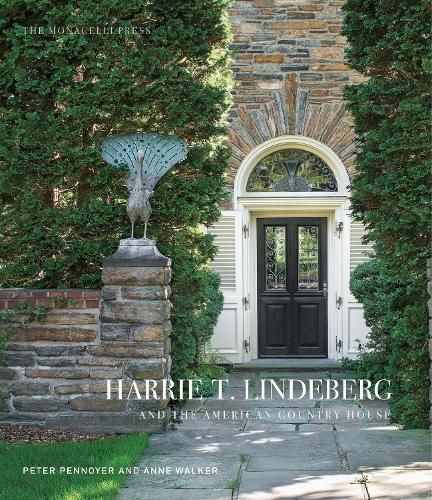Readings Newsletter
Become a Readings Member to make your shopping experience even easier.
Sign in or sign up for free!
You’re not far away from qualifying for FREE standard shipping within Australia
You’ve qualified for FREE standard shipping within Australia
The cart is loading…






First monograph on a leading architect of the American Country House Era who synthesized Scandinavian, European, and American traditions.
Trained at McKim, Mead & White, Harrie T. Lindeberg moved away from the formal classicism of his mentors to develop a picturesque form that is a unique contribution to the image of the American country house. Born of Swedish parents, Lindeberg incorporated the high roofs and simple lines of Scandinavian design into a vocabulary that also included sources ranging from French, English, and Georgian to American Colonial. Critics saw Lindeberg’s approach, novel for its fresh and idiosyncratic interpretation of the past, as essentially American because it acknowledged its own time and place first and foremost. His houses convey a quiet dignity, with a new emphasis on comfort and convenience and a deep commitment to the natural surroundings. Today, a remarkable number of Lindeberg’s houses stand as they were originally built. Many continue to be private homes, cherished and maintained by their owners for what they are- comfortable houses with a domestic spirit but at the same time works of art that reveal Lindeberg’s beautifully executed pursuit of unity of his designs.
$9.00 standard shipping within Australia
FREE standard shipping within Australia for orders over $100.00
Express & International shipping calculated at checkout
First monograph on a leading architect of the American Country House Era who synthesized Scandinavian, European, and American traditions.
Trained at McKim, Mead & White, Harrie T. Lindeberg moved away from the formal classicism of his mentors to develop a picturesque form that is a unique contribution to the image of the American country house. Born of Swedish parents, Lindeberg incorporated the high roofs and simple lines of Scandinavian design into a vocabulary that also included sources ranging from French, English, and Georgian to American Colonial. Critics saw Lindeberg’s approach, novel for its fresh and idiosyncratic interpretation of the past, as essentially American because it acknowledged its own time and place first and foremost. His houses convey a quiet dignity, with a new emphasis on comfort and convenience and a deep commitment to the natural surroundings. Today, a remarkable number of Lindeberg’s houses stand as they were originally built. Many continue to be private homes, cherished and maintained by their owners for what they are- comfortable houses with a domestic spirit but at the same time works of art that reveal Lindeberg’s beautifully executed pursuit of unity of his designs.